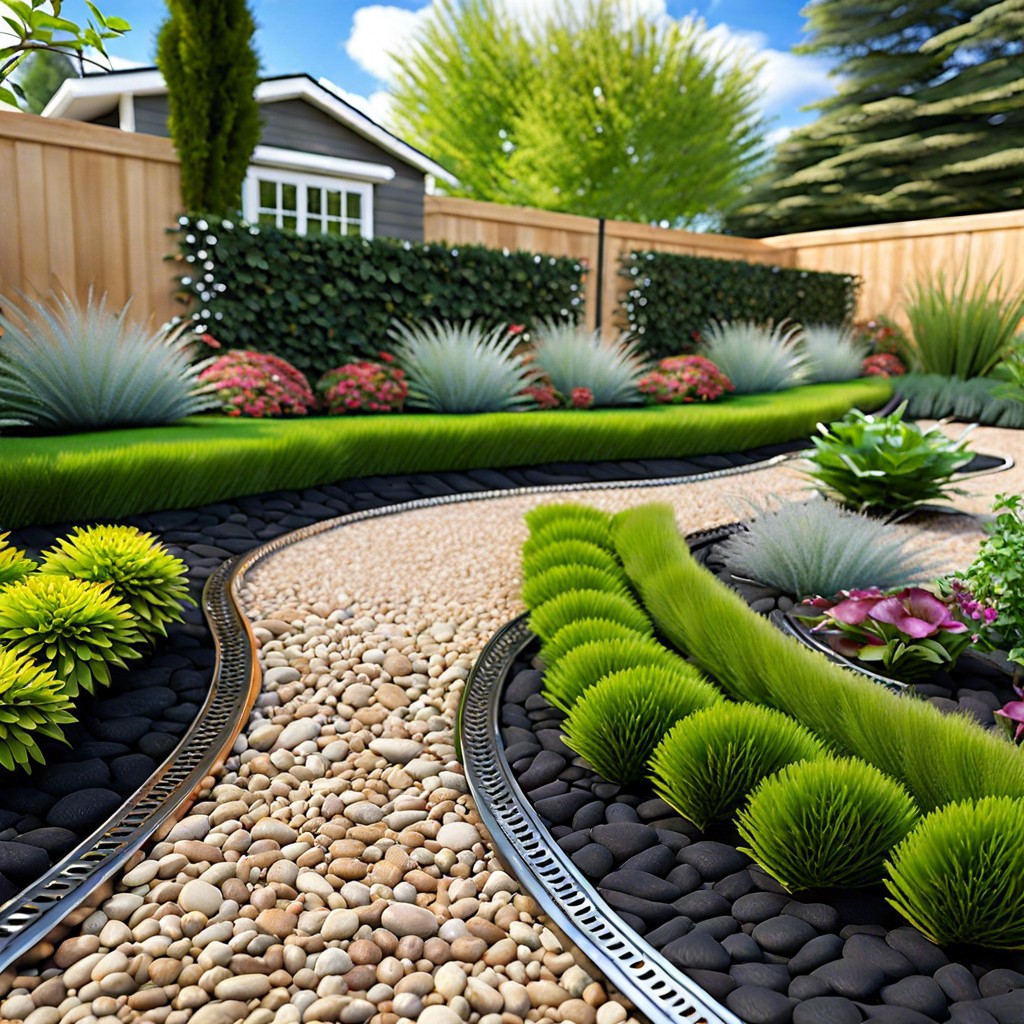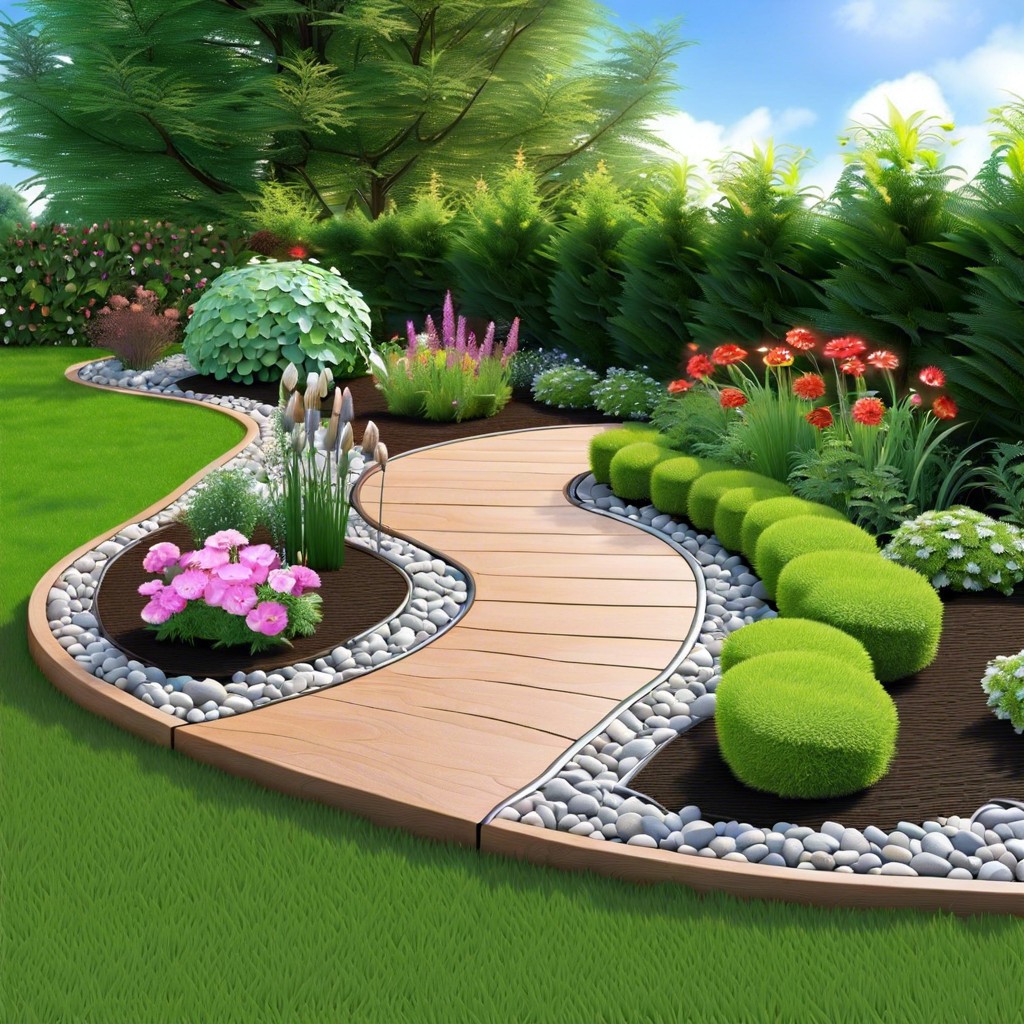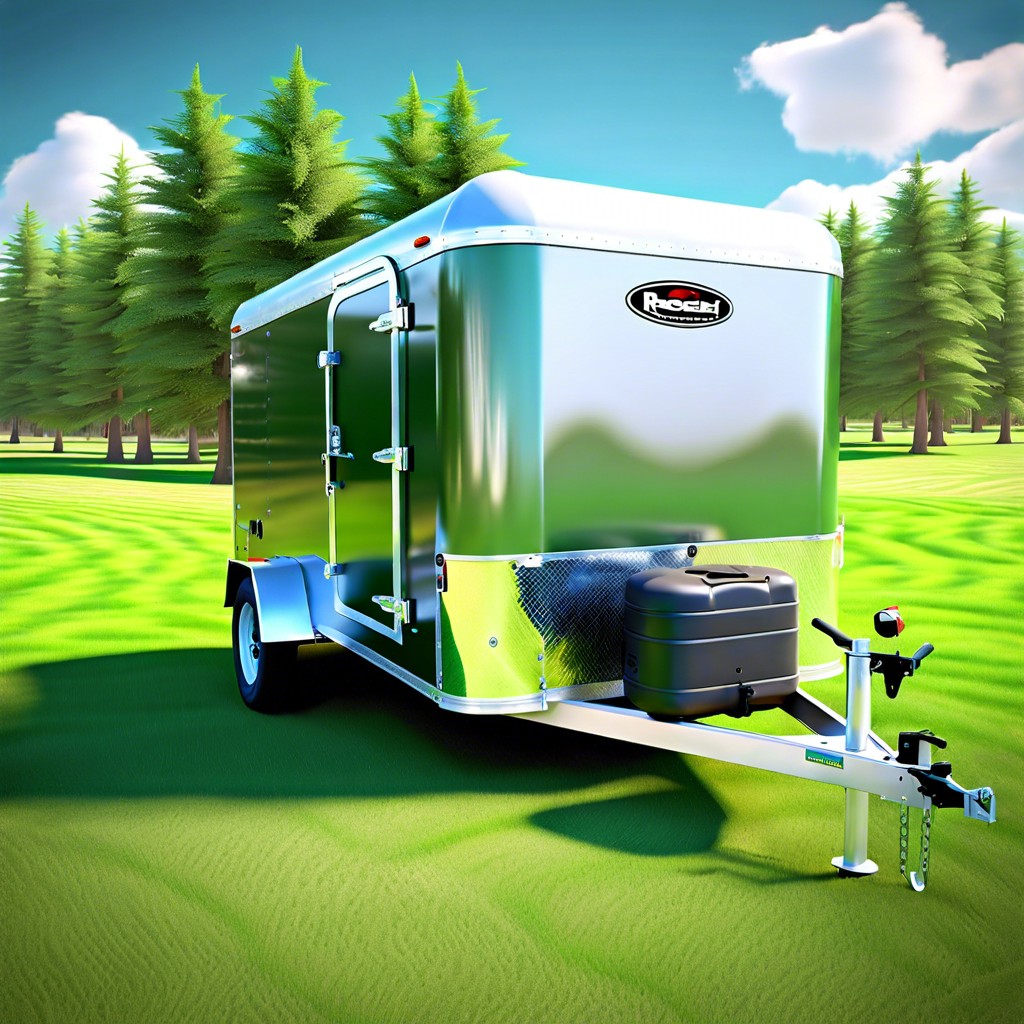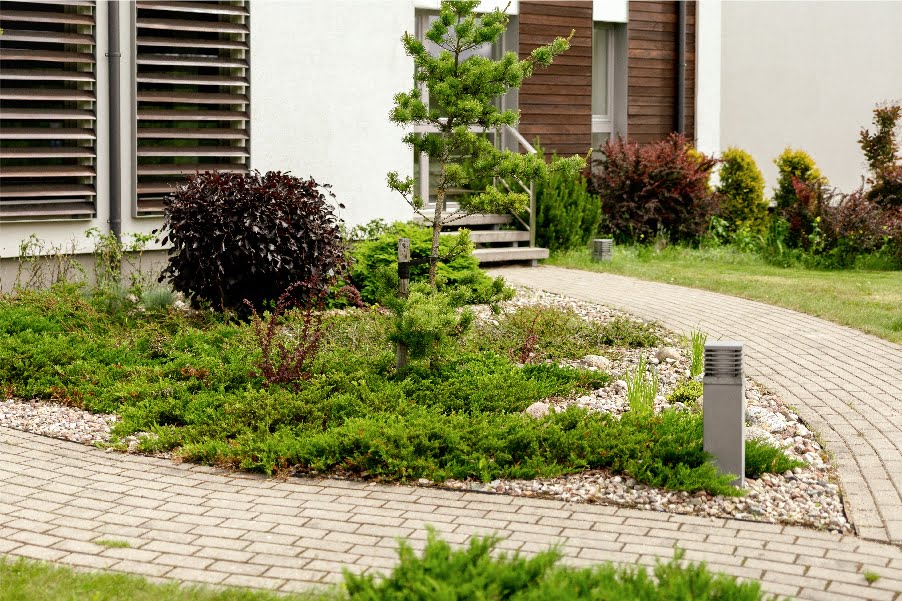Welcome to our buying guide on metal landscape edging, where we will help you understand the different types, benefits, and key factors to consider when selecting the ideal edging solution for your outdoor space.
Key takeaways:
- Metal landscape edging offers both aesthetics and functionality.
- Different types of metal are available, each with its advantages.
- Installing metal landscape edging requires planning and proper placement.
- Maintaining metal landscape edging is easy and requires minimal effort.
- Metal landscape edging is durable and resistant to weather conditions.
Benefits of Metal Landscape Edging

Metal landscape edging offers a blend of aesthetics and functionality to any garden or yard. With its sleek lines and clean appearance, it provides a modern edge to garden beds, separating different areas of your outdoor space with precision. Not only does it enhance the visual appeal, but it also serves a practical purpose by preventing grass and invasive roots from encroaching into flower beds and vegetable patches, saving you time on maintenance.
In addition to its neat and tidy look, metal edging is incredibly strong and can withstand the pressure of lawnmowers and trimmers without sustaining damage, ensuring that your garden edges remain intact over time. Furthermore, the versatility of metal allows for a range of creative designs and flexible layouts, accommodating curves and corners with ease.
The long-term cost efficiency of metal edging is another compelling benefit. Although the initial investment might be higher than alternative materials, the metal’s durability means it won’t need to be replaced as frequently, making it an economical choice in the long run. This robust characteristic also means it copes well with various weather conditions, from intense heat to frost, ensuring your garden’s edges look sharp year-round.
Types of Metal Used in Landscape Edging
When selecting metal for landscape edging, it’s important to consider the material’s aesthetic appeal, cost, durability, and ease of installation. Common metals include:
**Steel:** Known for its strength, steel edging provides a crisp, clean border. It is often available in various finishes, such as powder-coated or Cor-Ten steel, which develops a rust-like appearance that protects against further corrosion.
**Aluminum:** Lightweight and resistant to rust, aluminum is a great option for those looking for a durable yet easy-to-shape material. It’s perfect for curvy borders and comes in several colors to match different landscape designs.
**Galvanized Steel:** This is steel coated with a layer of zinc to prevent rust. It’s particularly useful in moist climates where corrosion is a concern. Galvanized steel is tougher than aluminum, making it a good choice for edging that needs to stand up to foot traffic or lawn equipment.
**Copper:** Over time, copper develops a unique green patina. While initially more expensive, it offers a distinctive look that can elevate the aesthetic of your garden. Copper is naturally resistant to rust and works well in a variety of soil types.
Each metal has its advantages, so your choice will depend on the specific needs of your landscaping project, the local climate, and your personal design preferences. Consider how the edging will complement your garden’s style and the amount of maintenance you’re willing to undertake.
Installing Metal Landscape Edging
When you’re ready to put your metal landscape edging in place, start by planning the layout along the area you want to define. Use a garden hose or string to shape your design, which allows for the flexibility to adjust before any digging starts.
Once you’re happy with the placement, mark the ground along the hose or string. Then, dig a trench along this line to the depth recommended by the edging manufacturer. The trench should be slightly wider than the width of the edging for easy installation.
Slide the edging into the trench, ensuring it stands upright and is level. For sections where you need to bend the edging, do so gently to avoid any kinks or damage. If your edging has interlocking pieces, connect them as you go along.
For securing the edging in the ground, use the stakes provided with your kit. Hammer them in at the designated intervals to hold the edging firmly in place. When hammering, aim to get the stakes flush with the edging or slightly below to avoid any tripping hazards.
Finally, backfill the trench with soil on both sides and compact it down to eliminate any air pockets. This will also help to hold the edging in place. Remember to check the straightness and height of the edging as you move along, making adjustments as necessary to ensure it forms a neat border.
Maintenance of Metal Landscape Edging
Maintaining your metal landscape edging is a breeze, requiring minimal effort to keep it looking pristine over the years. One of the best things about this type of edging is that it withstands the test of time with very little upkeeping.
Regular inspections are key. Keep an eye out for any sections that may have shifted or become exposed. If they have, simply tap them back into place with a rubber mallet. This keeps the edging effective and ensures it continues to provide a clean divide between different areas of your garden.
Debris accumulation can be a concern, but a quick sweep or a light hose down is usually all that’s needed to remove grass clippings, leaves, and soil that gather at the edge. If you notice minor corrosion or scratches, you can apply a bit of metal paint to the affected area. Opt for a paint that’s formulated for outdoor metal to enhance the edging’s resistance to rust and maintain its polished look.
For those living in regions with harsh winters, it’s often recommended to give your edging a once-over before the cold season sets in. This is just to ensure that everything is secure and any necessary touch-ups are done before potential frost heave or heavy snowfall.
Remember, the beauty of metal edging is in its simplicity and ease of care. A little attention here and there ensures your landscaping borders remain as sharp and definitive as when they were first installed.
Durability and Weather Resistance
Metal landscape edging stands out for its long-lasting qualities, with its robustness being a significant factor in its popularity among gardeners and landscapers. The materials used, such as steel and aluminum, are known for their strength and ability to withstand exposure to the elements without deteriorating quickly. They resist rust, corrosion, and soil acidity, ensuring that the edges of your garden beds remain crisply defined year after year.
This edging solution typically endures through extreme weather conditions, including blistering summers and frigid winters, without warping or cracking. Its resilience is particularly appreciated in areas that experience a freeze-thaw cycle, which can be damaging to less sturdy materials.
Moreover, metal’s toughness means it’s a great barrier against invasive roots that might otherwise disrupt garden boundaries. This low-maintenance option saves time and effort, as it doesn’t require frequent replacement or repair, ensuring your landscape design remains intact with minimal intervention.




